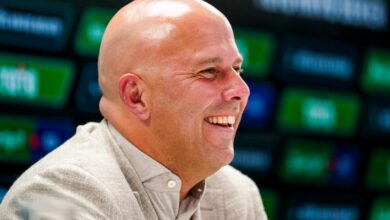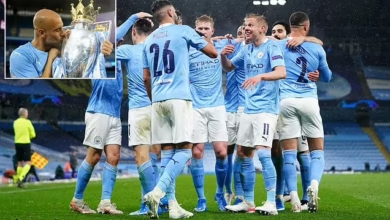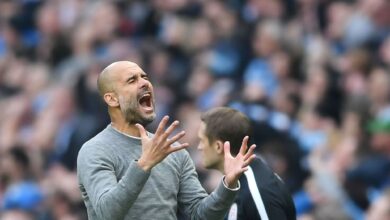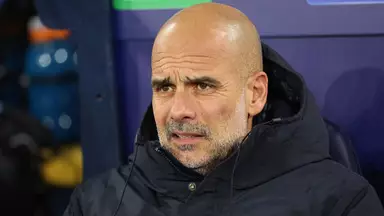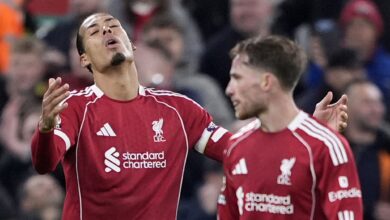Fabrizio Romano Shares Arsenal and Sesko Update After Deal Agreed Reports

The summer transfer window has once again become a theater of dreams, speculation, and strategic maneuvering, with Arsenal Football Club finding themselves at the center of one of the most intriguing striker sagas in recent memory. As the 2024-2025 season draws to a close and clubs begin their preparations for the upcoming campaign, the Gunners have identified a critical need that could define their trajectory in the 2025-2026 season: securing a world-class center-forward.
Arsenal’s current predicament stems from a series of unfortunate events that have exposed the fragility of their attacking options. The long-term injuries to both Kai Havertz and Gabriel Jesus during the previous season forced manager Mikel Arteta into an unprecedented tactical adjustment, deploying midfielder Mikel Merino in a center-forward role. While this demonstrated the Spanish coach’s tactical flexibility and Merino’s versatility, it also highlighted a glaring weakness in Arsenal’s squad depth and the urgent need for reinforcement in the final third.
The north London club’s attacking struggles have been well-documented throughout the season. Despite their impressive defensive solidity and midfield creativity, the lack of a consistent goal-scoring threat has often left them wanting in crucial moments. This deficiency has become even more apparent when compared to their title rivals, who boast prolific strikers capable of deciding matches with moments of individual brilliance.
Arsenal’s transfer strategy has crystallized around two primary targets, each representing a different philosophy and approach to solving their striker conundrum. Benjamin Sesko of RB Leipzig and Viktor Gyokeres of Sporting CP have emerged as the frontrunners in what has become a fascinating tactical and financial chess match.
Benjamin Sesko represents the modern striker archetype that has become increasingly coveted in contemporary football. The Slovenian international has carved out an impressive reputation at RB Leipzig, showcasing the kind of physical presence, technical ability, and tactical intelligence that makes him an ideal fit for Premier League football. His performances in the Bundesliga have caught the attention of several top European clubs, but Arsenal appears to be leading the race for his signature.
What makes Sesko particularly attractive to Arsenal is his versatility and adaptability. Standing at an imposing height, he possesses the physical attributes necessary to compete in the Premier League’s demanding environment while maintaining the technical skills required to fit into Arteta’s possession-based system. His ability to hold up play, bring teammates into the game, and create space for Arsenal’s creative midfielders aligns perfectly with the tactical blueprint that has served the club well in recent seasons.
The Slovenian’s goal-scoring record speaks volumes about his potential impact. His consistency in finding the back of the net, combined with his work rate and pressing intensity, makes him an ideal candidate to lead Arsenal’s front line. However, the complexity of modern transfer negotiations means that securing his services involves more than just agreeing on a fee with RB Leipzig.
On the other side of the equation stands Viktor Gyokeres, whose meteoric rise at Sporting CP has established him as one of Europe’s most sought-after strikers. The Swedish international’s journey from Championship football with Coventry City to becoming a Primeira Liga sensation represents one of modern football’s most remarkable transformation stories.
Gyokeres brings a different dimension to Arsenal’s considerations. His proven track record of adapting to different leagues and tactical systems, combined with his explosive pace and clinical finishing, makes him an immediately impactful option. His performances in European competitions have demonstrated his ability to perform on the biggest stages, a quality that would be invaluable for Arsenal’s Champions League ambitions.
The striker’s physical attributes complement his technical skills perfectly. His combination of strength, speed, and intelligent movement in the box has made him a nightmare for defenders across Europe. His ability to stretch defenses with his pace while also being capable of dropping deep to participate in build-up play would add a new dimension to Arsenal’s attacking approach.
The intervention of transfer expert Fabrizio Romano has added a crucial layer of clarity to what had become an increasingly convoluted narrative. Speaking on GIVEMESPORT’s Market Madness podcast, Romano provided important context that challenges some of the more sensational reports that have emerged in recent days.
Romano’s clarification regarding Sesko’s situation is particularly significant. Despite widespread reports suggesting that personal terms had been agreed between the player and Arsenal, the Italian journalist’s sources indicate that no such agreement exists. This revelation highlights the often chaotic nature of transfer reporting, where speculation can quickly transform into perceived fact.
“There were reports this morning of an agreement done on personal terms. I’m not aware of that,” Romano stated, emphasizing the preliminary nature of Arsenal’s negotiations with both players. His assertion that “there is still nothing done between clubs or with the player” serves as a reality check for fans who may have assumed the deals were closer to completion than they actually are.
The transfer expert’s insight into Arsenal’s approach reveals a methodical strategy that prioritizes due diligence over hasty decision-making. The club’s willingness to pursue both targets simultaneously demonstrates their commitment to securing a striker while also maintaining flexibility in their negotiations. This dual approach allows Arsenal to leverage competitive dynamics while ensuring they don’t put all their eggs in one basket
Perhaps the most revealing aspect of Romano’s update concerns the financial complexities surrounding both potential transfers. The situation with Gyokeres particularly illustrates the intricate web of relationships and negotiations that define modern football transfers.
Romano’s explanation of the “battle between the agents and Sporting” regarding Gyokeres’ valuation provides fascinating insight into the often-hidden dynamics of transfer negotiations. The difference between a €60 million and €80 million valuation is not merely numerical; it represents the difference between a manageable investment and a potentially transformative but risky expenditure.
This pricing uncertainty affects Arsenal’s planning in multiple ways. From a Financial Fair Play perspective, the final fee will determine how much flexibility the club retains for other positions that may need strengthening. The valuation also impacts the structure of the deal, including potential add-ons, payment schedules, and the inclusion of performance-related bonuses.
For Sesko, the financial considerations are equally complex but different in nature. RB Leipzig’s position as a selling club with a history of developing and moving on talented players creates a different negotiating dynamic. The German club’s willingness to sell will likely depend on their ability to secure a suitable replacement and the timing of the transfer in relation to their own competitive commitments.
The choice between Sesko and Gyokeres extends beyond individual quality to encompass tactical philosophy and system compatibility. Mikel Arteta’s Arsenal has evolved into a team that prioritizes control, precision, and tactical flexibility, and any new striker must seamlessly integrate into this framework.
Sesko’s style suggests he would excel in Arsenal’s possession-based system. His comfort in receiving the ball with his back to goal, combined with his ability to bring teammates into play, would provide the focal point that Arsenal’s attacking play sometimes lacks. His pressing intensity aligns with Arteta’s defensive philosophy, ensuring that the team’s collective defensive effort remains intact.
Gyokeres, meanwhile, offers a more direct threat that could add a different dimension to Arsenal’s attack. His pace and movement in behind defenses could provide the kind of threat that stretches opposition defenses, creating space for Arsenal’s creative players to exploit. His versatility in playing across the front line would also give Arteta greater tactical flexibility in different match situations.
The integration of either player would likely necessitate adjustments to Arsenal’s current system, but these changes could unlock new levels of performance from the existing squad. The presence of a proven goal scorer could elevate the performances of players like Martin Ødegaard, Bukayo Saka, and Gabriel Martinelli, who have sometimes lacked the focal point necessary to maximize their creative output
Arsenal’s pursuit of a top-tier striker reflects broader ambitions that extend beyond merely improving their goal-scoring statistics. The club’s investment in youth development, combined with their recent defensive improvements, has created a foundation that requires only the addition of consistent goal-scoring threat to compete at the highest level.
The importance of this signing cannot be overstated in the context of Arsenal’s competitive position. Manchester City’s continued dominance, Liverpool’s resurgence under new management, and the ongoing developments at other top-six clubs mean that Arsenal cannot afford to stand still. The addition of a proven striker could be the difference between securing Champions League qualification and challenging for major trophies.
The psychological impact of securing either Sesko or Gyokeres would also be significant. For a club that has endured periods of frustration and near-misses in recent seasons, the arrival of a marquee striker would signal serious intent and potentially attract other high-caliber players who want to be part of a winning project.
The pursuit of both strikers occurs within a broader market context that includes competition from other major European clubs. The scarcity of proven strikers at the elite level means that Arsenal faces competition not just from Premier League rivals but from clubs across Europe who recognize the value these players represent.
This competitive environment works both in Arsenal’s favor and against them. Their established status as a top Premier League club, combined with their Champions League participation and the appeal of working under Arteta, provides significant drawing power. However, clubs with greater financial resources or more immediate trophy prospects could potentially outbid or outmaneuver Arsenal in the final stages of negotiations.
The timing of Arsenal’s approach also becomes crucial in this context. Acting decisively while maintaining negotiating flexibility requires a delicate balance that could determine the success or failure of their transfer strategy. The club’s experience in recent transfer windows, including both successes and missed opportunities, will inform their approach to these critical negotiations.
Romano’s mention of the “battle between the agents and Sporting” regarding Gyokeres highlights the increasingly important role that player representatives play in modern transfer negotiations. The alignment between club valuations, agent expectations, and player aspirations has become a crucial factor in determining the success of high-profile transfers.
For Arsenal, managing these relationships effectively while maintaining their financial discipline requires sophisticated negotiation skills and clear communication about their project and ambitions. The club’s ability to convince both players and their representatives that Arsenal represents the best next step in their careers will be crucial to the success of either transfer.
The role of agents also extends to contract negotiations, where factors such as salary expectations, performance bonuses, and future release clauses must be carefully balanced against the club’s long-term financial planning. These details, while often overlooked by supporters, can determine the overall success of a transfer both on and off the pitch.
As the summer transfer window progresses, Arsenal’s decision-making process will be scrutinized by supporters, analysts, and competitors alike. The choice between Sesko and Gyokeres, or the potential pursuit of alternative targets if neither deal materializes, will significantly influence the club’s trajectory in the coming season.
Romano’s assertion that “only one will join” underscores the binary nature of Arsenal’s striker search. This limitation, whether imposed by financial constraints or tactical considerations, means that the club must make a definitive choice that aligns with their immediate needs and long-term strategy.
The resolution of these negotiations will also provide insight into Arsenal’s evolution as a modern football club. Their ability to compete for top-tier talent while maintaining financial responsibility will demonstrate whether they have successfully transitioned from a period of rebuilding to one of genuine competitiveness at the highest level.
Arsenal’s pursuit of Benjamin Sesko and Viktor Gyokeres represents more than a simple transfer saga; it embodies the club’s ambitions, strategy, and vision for the future. The eventual outcome will likely define not just their prospects for the 2025-2026 season but their position in the broader landscape of European football.
Fabrizio Romano’s clarifications serve as a valuable reminder that in the fast-paced world of transfer speculation, patience and accurate information are essential. While supporters eagerly await developments, the complex negotiations continue behind the scenes, with multiple variables still to be resolved.
As Arsenal navigate these crucial weeks, their success in securing either striker will depend on their ability to balance ambition with pragmatism, financial resources with strategic thinking, and immediate needs with long-term planning. The outcome will provide a fascinating case study in modern football transfers and could well determine Arsenal’s competitive position for years to come.
The summer transfer window remains open, and Arsenal’s striker search continues. Whether that search concludes with the arrival of Sesko, Gyokeres, or an alternative target entirely, the process itself has already demonstrated the complexity and intrigue that makes football transfers such a compelling aspect of the modern game. For Arsenal supporters, the wait continues, but the potential rewards make that wait worthwhile.






